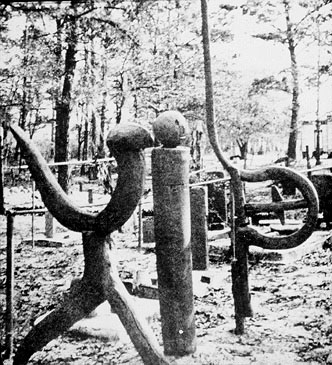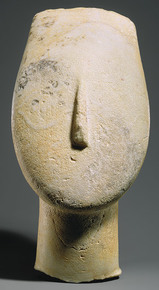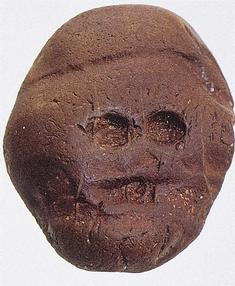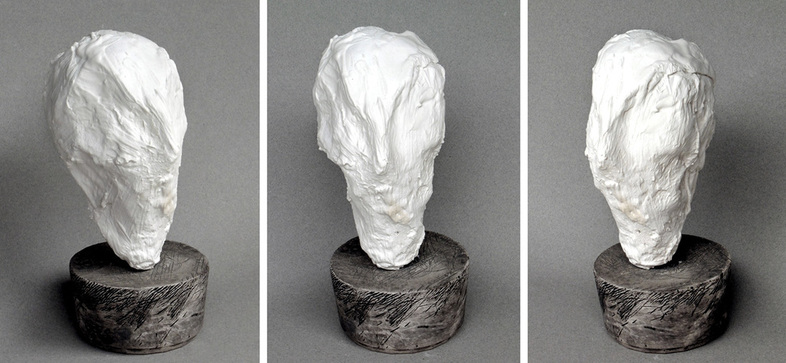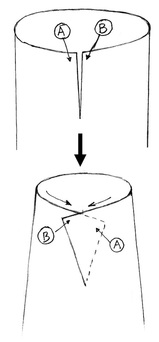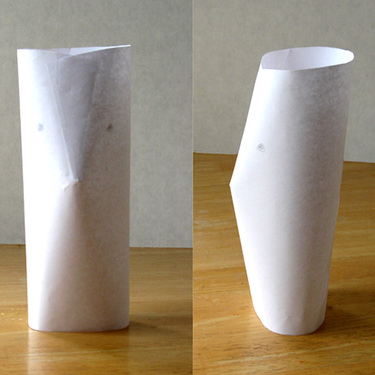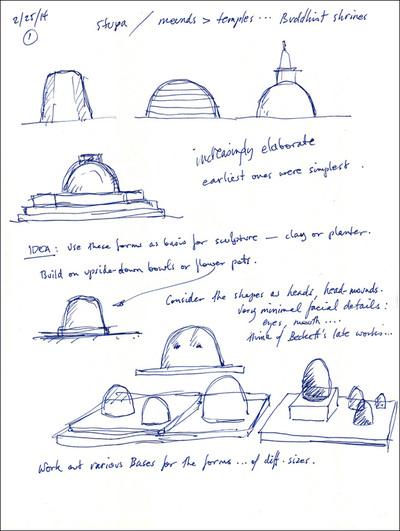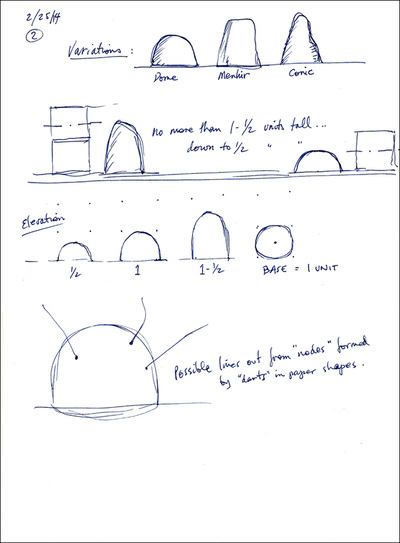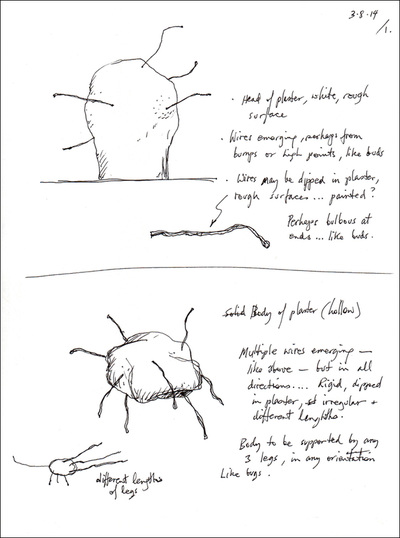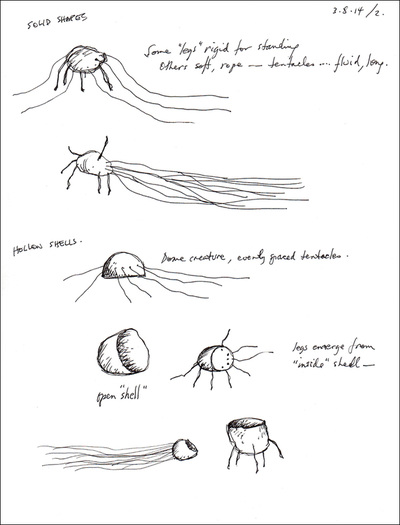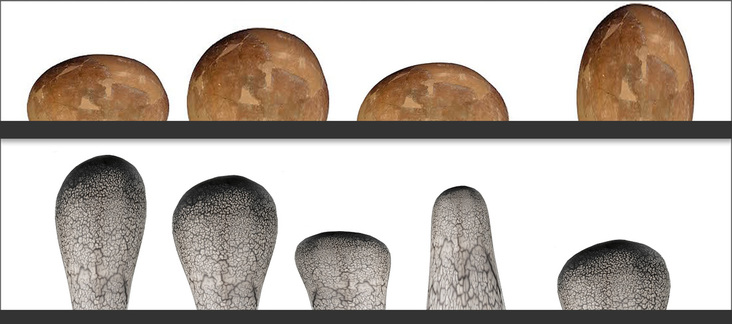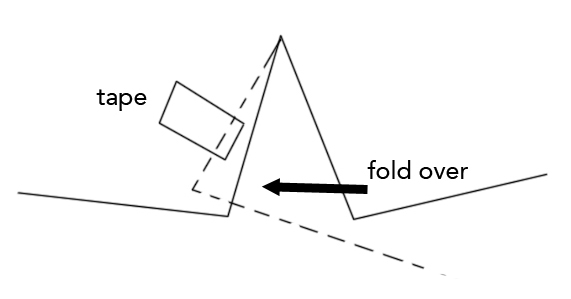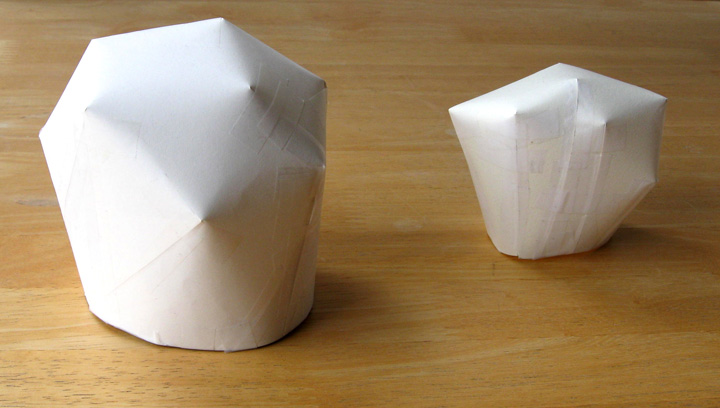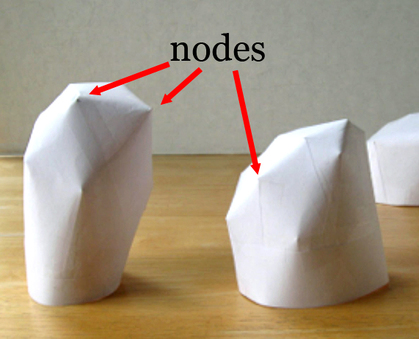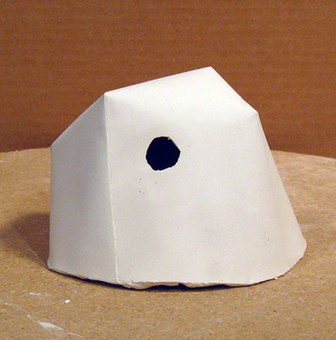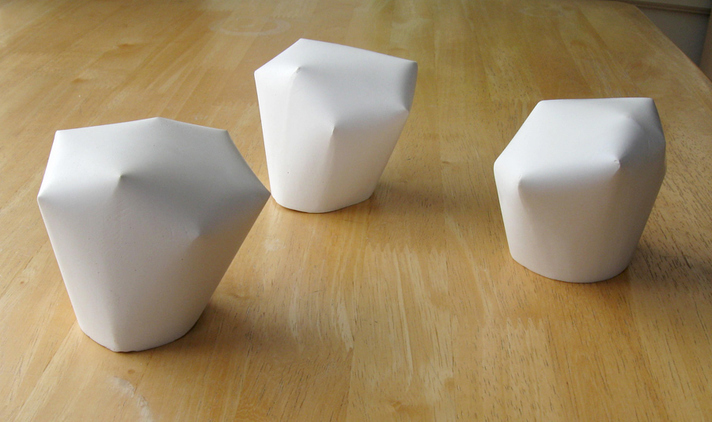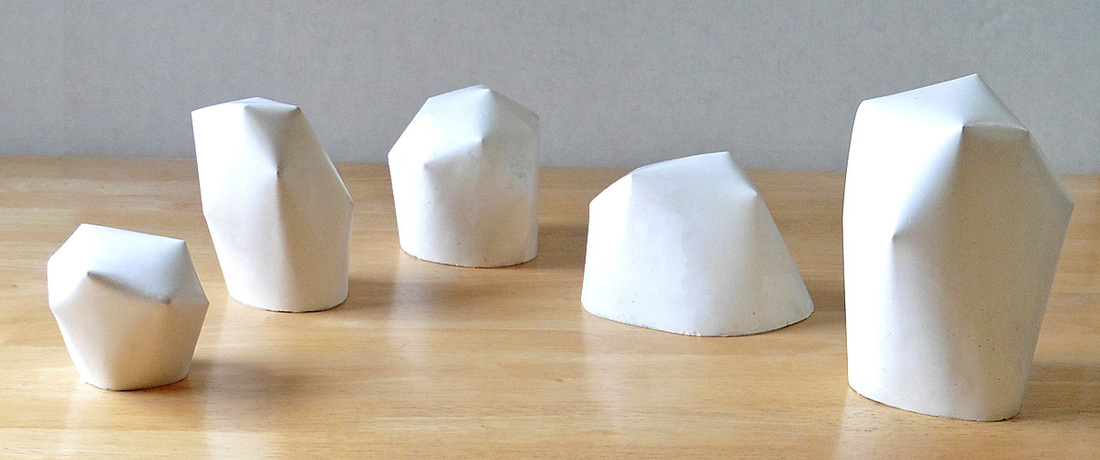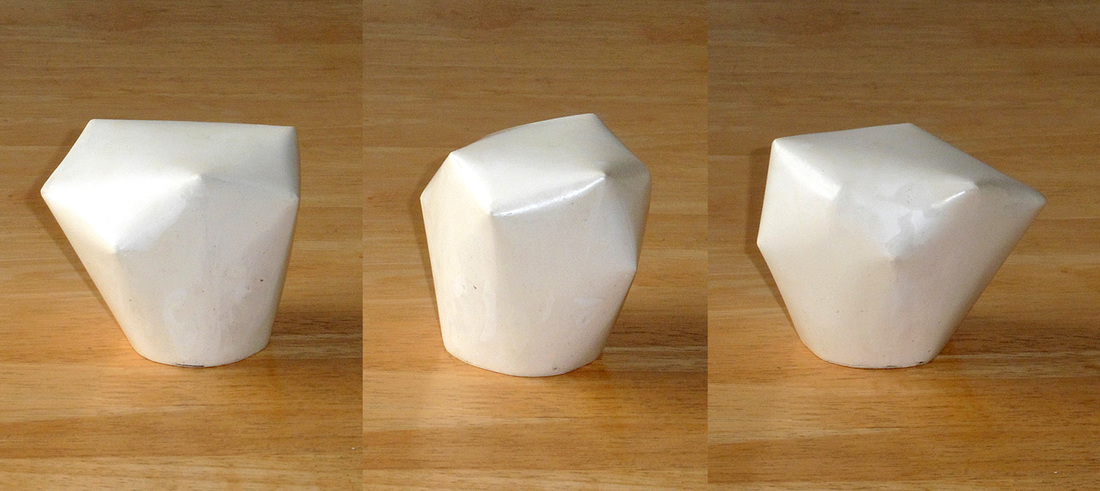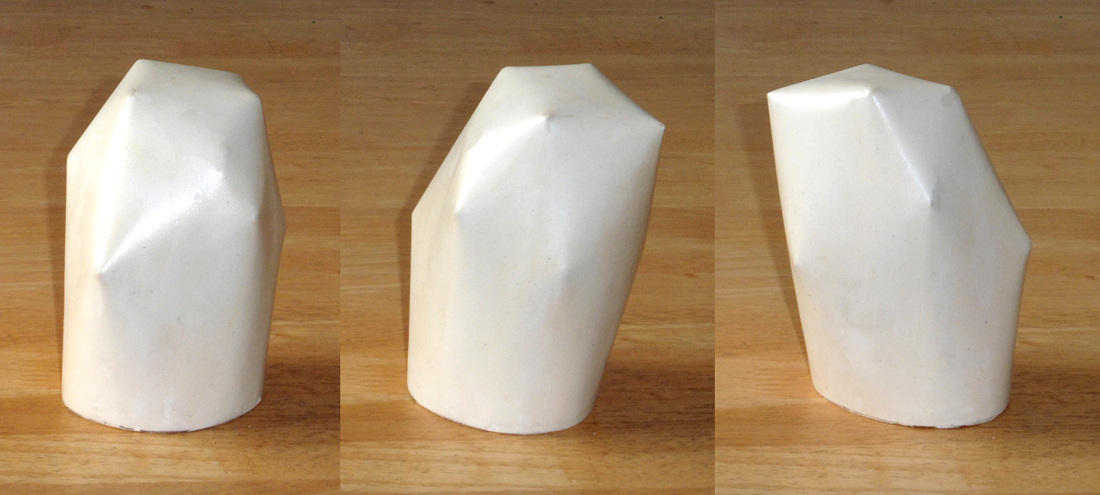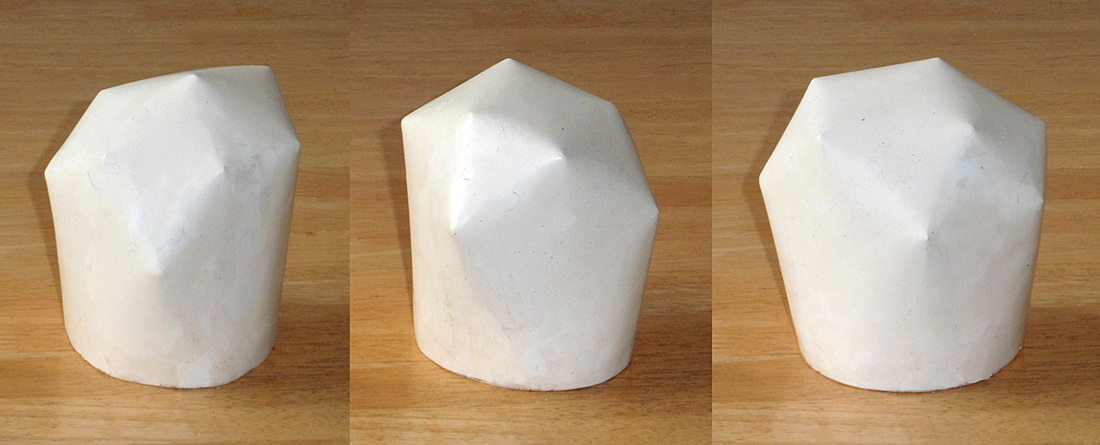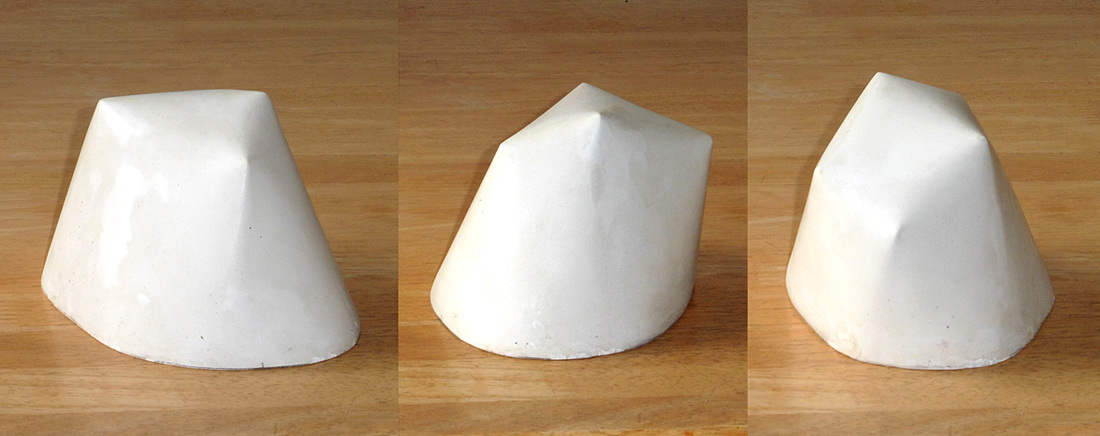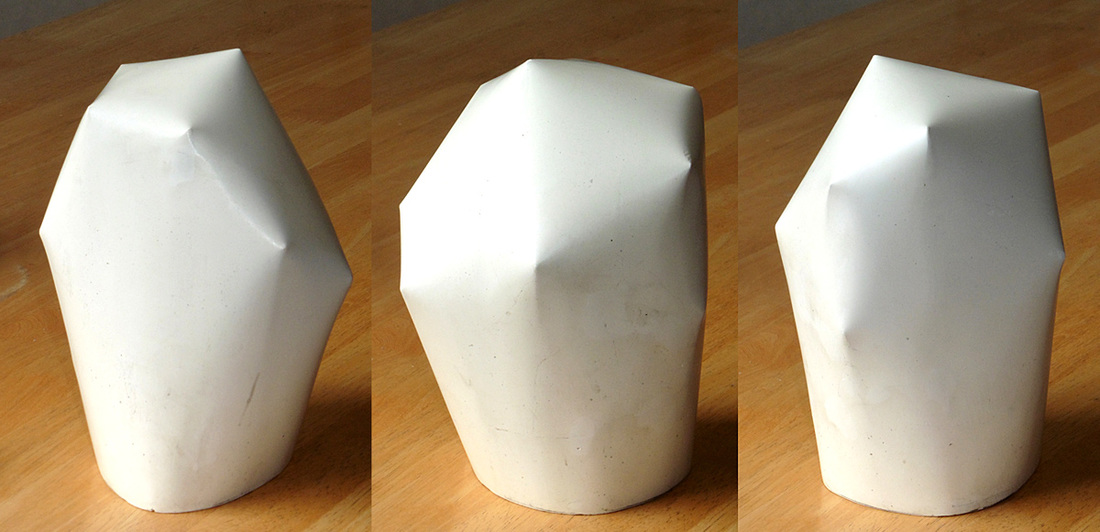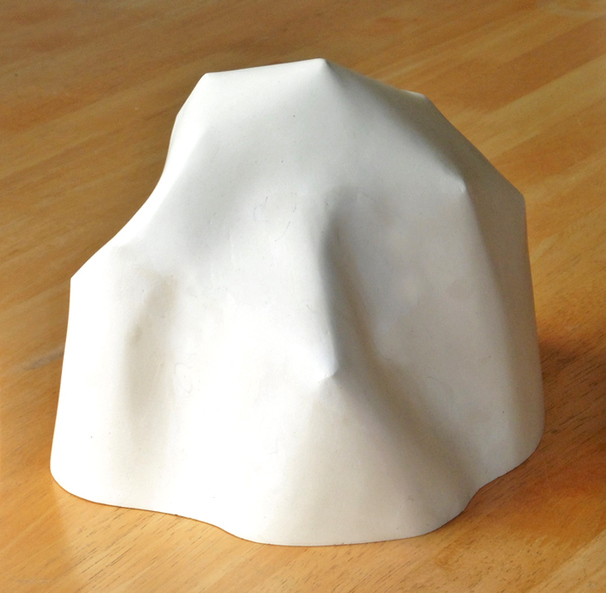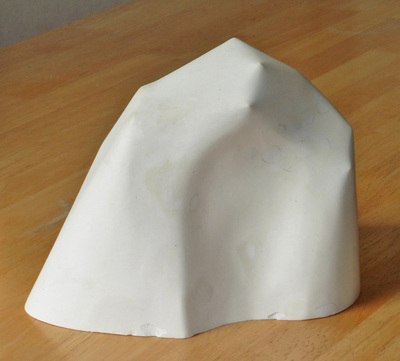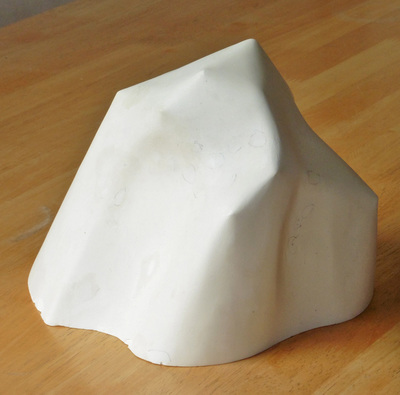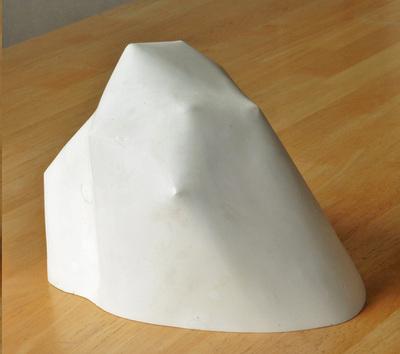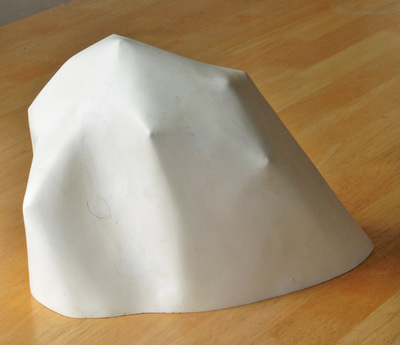HEADS 2014–2015
|
For many years I have been thinking of making heads, one of the most ancient and potent representations of a person in sculpture. When we lived in Cambridge I saw a carved sphere from Africa in the anthropology museum that was thought to be a head. Around the same time I found an image in a book, The Story of Jazz by Marshall W. Stearns, 1956, which showed a similar spherical head on a post. The photo (shown here) was labeled Carved wooden grave markers, Sunbury, Georgia, surviving in later 19th Century.
|
Masks from the great African tribal traditions have an incredible variety and range of forms, as do those of many other non-Western cultures. In the Western tradition, the portrait has emerged from the mask with its own power and presence.
Almost any object with two dots or marks in the appropriate places can be read as a face, and a face represents a head. And even without eyes many object may suggest or represent a head.
Almost any object with two dots or marks in the appropriate places can be read as a face, and a face represents a head. And even without eyes many object may suggest or represent a head.
Prehistoric heads
Even without eyes this reads as a head. I formed it from a mass of foil that I then coated with plaster.
Sometime in May 2014, looking at my paper faceted columns, I made a paper cylinder and then made a cut into one end of it. When I pulled one edge of this cut over the opposite side of the cylinder and taped it, the now pinched cylinder suggested a head.
I drew some “heads” and “mounds”, heads growing out of the ground as on Easter Island, and made some digital renderings of simple “head” shapes. I thought of making groups, or “head-scapes”, on platforms, perhaps repositionable like my little Chamber Players critters. (See Patronage Project page.)
Four pages of drawings and notes on making heads. Click to enlarge.
Digital designs for heads variations.
From there I moved to making a series of shapes from single sheets of paper, using multiple “darts” to shape the three-dimensional form of the paper.
Two paper “heads” using darts to make three-dimensional shapes.
I was still working on the idea of making heads, but the multiple pointed nodes created by the dart cuts made these abstract shapes more dynamic than my drawings suggested. The pointed nodes gave the curved surfaces a sense of tension, and the nodes seemed to be points of projection from the pressure of some inside force. I was pleasantly surprised by the emergence of these shapes, and they seemed to offer a range of possible variations.
I would never have come up with these forms by modeling clay or through some mathematical equations (of which I am ignorant anyway). I liked that these forms came from improvised cutting and pasting of sheets of paper, a two-dimensional object begetting a three-dimensional one, outside the traditions of origami or other folded paper constructs.
I would never have come up with these forms by modeling clay or through some mathematical equations (of which I am ignorant anyway). I liked that these forms came from improvised cutting and pasting of sheets of paper, a two-dimensional object begetting a three-dimensional one, outside the traditions of origami or other folded paper constructs.
When I had made quite a few paper “heads”, I looked for a way to cast them into a more permanent material. I made one head from heavier cardstock paper and cast it directly with plaster. After removing the paper, the inside folds of the paper showed on the surface of the finished piece, and I left them without sanding them off. The plaster was too thin at one place and broke off, presenting a hole in the cast that looked like an eye.
Plaster head cast from a heavy paper mold.
But this was only one piece, and the paper was lost in the process, so I could not cast another copy of the same shape. I wanted to be able to make multiple copies. After many trials, I worked out a process for making patterns from thin acrylic sheets. Each pattern, when properly taped at the edges of its darts, formed the exact shape of a given piece. The acrylic patterns were reusable for casting, and gave a fine smooth finish to the plaster pieces except at the seams, which I had to sand smooth after casting.
Three plaster casts made from the same mold pattern. 3 ¼ " high.
These small ones were especially pleasing to hold in the hand.
These small ones were especially pleasing to hold in the hand.
Of the several plaster “heads” I made, I chose five different ones to work to a smooth and seamless finish.
Five different heads in plaster, numbers 1 through 5.
Heights: 3 ¼", 5 ⅛", 3 ¾", 4", 7 ½"
Heights: 3 ¼", 5 ⅛", 3 ¾", 4", 7 ½"
Head No. 1 3 ¼" high (3 views)
Head No. 2 5 ⅛" high (3 views)
Head No. 3 3 ¾" high (3 views)
Head No. 4 4" high (3 views)
Head No. 5 7 ½" high (3 views)
I made one larger head with quite a different approach to the cuts and shaping, which became an eccentric formation. I did not prepare this one for a mold, but may develop other pieces along these lines.
Large Head Plaster 6" high x 9" wide.
Large Head (4 more views)
I then had polyurethane rubber molds made of the five selected pieces (Heads 1-5). From these molds I plan to make multiple casts in plaster, and use the cast pieces in various combinations to form groups. I also want to explore the addition of linear elements to these forms using metal rods, following up on my earlier Lines and Lumps studies.
These are my current sculpture projects in my small garage-workshop in San Francisco.
These are my current sculpture projects in my small garage-workshop in San Francisco.
